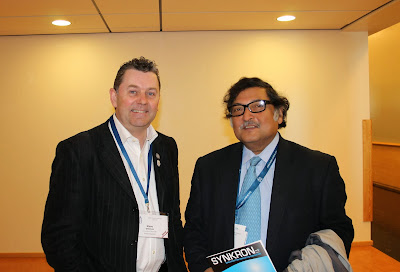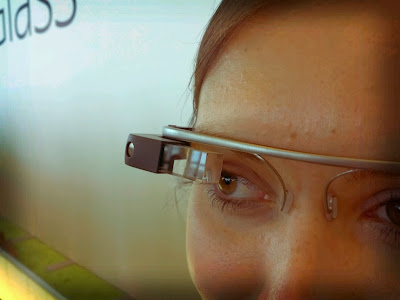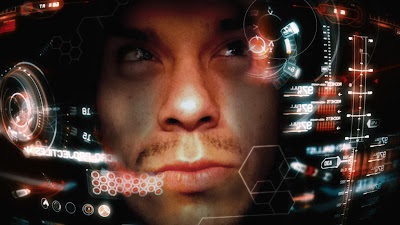 |
| Steve and Sugata at EDEN in Oslo |
In June I had the singular honour of being invited to host a unique keynote session in Oslo for the EDEN annual conference. The event was attended by delegates from many nations, and all were assembled on Day 2 of the event to listen to two of the greatest education celebrities of our time. In the room with me was Sugata Mitra, famed for his 'Hole in the Wall' computer projects, child driven education, and also more recently for his work around 'minimally invasive education' and the School in the Cloud. Just before the conference, it had been announced that he had won the prestigious TED prize of one million US dollars for his innovative research into learning. Sharing the keynote session with him, on a live link from California, was education guru Sir Ken Robinson, celebrated for his TED talks and his unique perspectives on creativity and learning. His TED searing critique of the education system entitled 'How Schools Kill Creativity' has alone received over 20 million views.
My job was an absolute dream - to introduce Sir Ken and Sugata, and moderate the conversation between them. I didn't need to do very much to be honest. I can't recall a better time spent on stage than I had listening to two of the sharpest minds choreographing such a fascinating, intellectual dance. The conversation was humorous, insightful and challenging in equal measure. To say the audience was enthralled was an understatement, and listening to the conversations after the event, it was clear that it had been the highlight of the conference for them.
During the 3 days of EDEN I also had the pleasure to record video interviews with several more well-known people who were attending the conference, including Michael Moore, Grainne Conole and the American Psychological Society president Bernard Luskin. EDEN in Norway will be remembered for many things, but for me, its keen focus on schools and compulsory education - not normally a major theme of the event - was an important feature. The children who took part, presenting their ideas for more engaging learning environments, was another great highlight of the conference. Read my review of the children's contribution right here.
You can read my interview with Professor Sugata Mitra on the EDEN site and watch our video conversation on the EDEN YouTube Channel. More reflections on 2013 tomorrow.
Photo by Steve Wheeler

Standing on the shoulders of giants by Steve Wheeler is licensed under a Creative Commons Attribution-NonCommercial-ShareAlike 3.0 Unported License.


